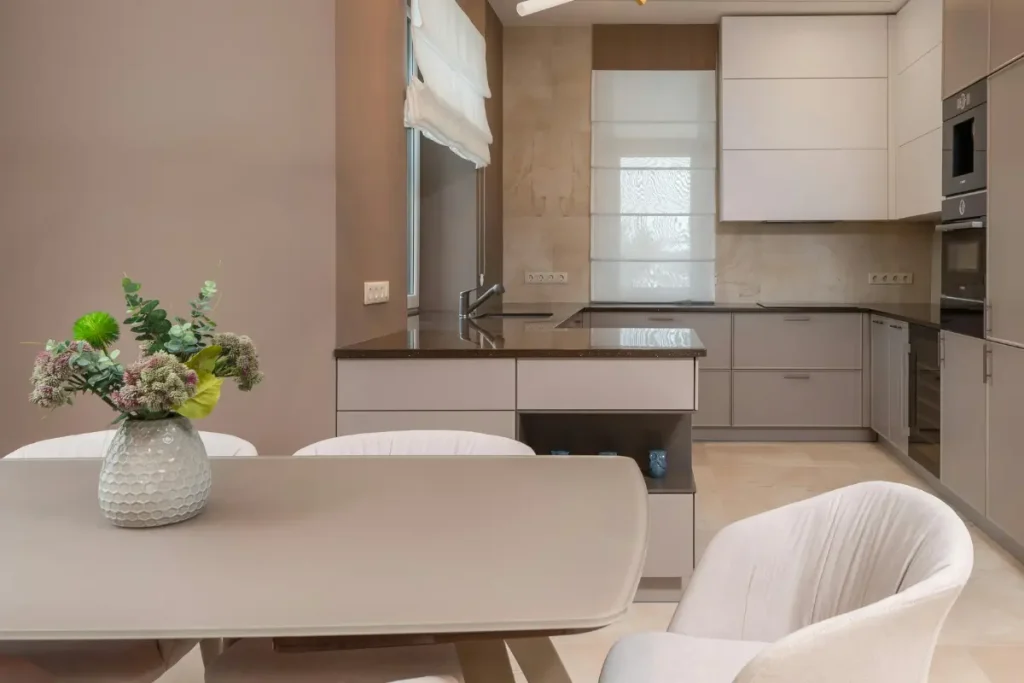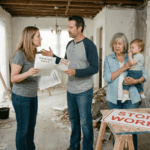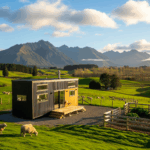As the demand for granny flats increases across New Zealand, homeowners are turning to these versatile structures for a variety of reasons. Whether it’s to keep family members close, generate rental income, or simply downsize, granny flats (also known as secondary dwellings or minor residential units) offer a practical and affordable solution.
With the government recently announcing changes to make building these dwellings easier, there’s never been a better time to explore the possibilities. If you’re considering adding a granny flat to your property, understanding the planning process, zoning laws, and the professionals you’ll need to hire is crucial.
In this guide, we’ll walk you through everything you need to know about building a granny flat, from the latest government policies to design, budgeting, and expert advice.
Section 1: Understanding Granny Flats and Their Uses
Granny flats are small, self-contained dwellings located on the same property as a primary residence. Although traditionally built to house elderly relatives, these units are now used for a wide range of purposes:
- Extended family living: Granny flats provide a separate yet close living arrangement for family members, offering privacy while maintaining proximity.
- Rental income: For homeowners looking to generate extra income, renting out a granny flat can be an excellent option.
- Downsizing: Older homeowners may choose to live in a granny flat themselves, downsizing while renting out the main house.
- Affordable housing: In the context of New Zealand’s housing crisis, granny flats present an affordable housing solution for many families.
Section 2: Government Policy Changes
Recent changes in New Zealand’s housing regulations have made building granny flats more accessible than ever. On 21st June 2024, the government proposed amendments to the Building Act and Resource Management Act, aimed at easing the restrictions around constructing small dwellings.
With these changes, homeowners will have the opportunity to construct granny flats or other small structures up to 60 square metres without the hassle of applying for building or resource consent. This represents a substantial shift, as securing these consents has traditionally been both time-consuming and costly. Embracing this new approach not only simplifies the process but also empowers homeowners with greater flexibility and freedom in enhancing their properties.
However, it’s important to note that while consent may no longer be required, the construction of granny flats still needs to meet New Zealand’s Building Code. This ensures that all structures remain safe, sustainable, and compliant with national standards. Additionally, if you plan to rent the unit out, it must meet Healthy Homes standards, which include insulation, heating, and ventilation requirements.
For now, while the government collects feedback on the proposed changes, you can begin planning your granny flat, knowing that these new regulations may soon come into effect.
Section 3: Types of Granny Flats
When considering building a granny flat, it’s essential to choose the type of dwelling that best suits your property and needs. In New Zealand, granny flats come in several forms, each with its own set of benefits and challenges:
- Built On Site:
- These are custom-built from the ground up and offer the greatest flexibility in design. You can create a layout that meets your exact specifications, but building on site can be time-consuming and more expensive than other options.
- Prefabricated Units:
- Prefabricated or modular homes are pre-built off-site and delivered to your property ready for installation. This option is often more affordable and quicker to install than on-site builds, though you may have fewer options for customisation.
- Conversions:
- If you have an existing structure, like a garage or outbuilding, converting it into a granny flat can be a cost-effective solution. This option is ideal for homeowners who want to repurpose unused space while avoiding the costs of new construction.
Choosing the right type of granny flat will depend on your budget, space, and long-term goals. Each option offers different advantages, and consulting with an architect or designer can help determine the best fit for your property.
Section 4: Planning Considerations
Building a granny flat requires careful planning, especially when it comes to local regulations and property limitations. Even with the government’s proposed changes to ease the process, it’s important to ensure that your project complies with existing rules. Here’s what you need to know:
1. Consents and Zoning Laws
While the government’s proposal may eliminate the need for building or resource consent for granny flats up to 60 square metres, this doesn’t mean you can skip understanding your local council’s rules. Every region has specific zoning laws that determine what kind of structures can be built on your property and where they can be located.
Zoning laws vary depending on whether your property is in a residential zone, rural zone, or special zone (such as heritage or coastal areas). For example:
- Residential zones: Most residential areas allow granny flats, but restrictions can differ by district. It’s crucial to consult your local district plan or council to confirm the exact requirements.
- Rural zones: These areas often offer more flexibility in terms of building additional dwellings, though you’ll still need to ensure compliance with rural zoning rules.
- Special zones: If your property is in a heritage area or coastal zone, additional regulations may apply, which could restrict the construction of granny flats.
Checking with your local council can help you avoid costly mistakes or delays. Most councils offer online tools that let you view zoning maps and other relevant guidelines.
2. Setbacks and Boundaries
Setbacks refer to the minimum distance your granny flat must be from property boundaries and other buildings. These rules ensure that your building doesn’t encroach on neighbouring properties or block natural light.
- Front yard setbacks: This is the distance your granny flat must be from the front boundary of your property, usually between 1 to 3 metres, depending on the local council.
- Side and rear setbacks: These distances are required between your granny flat and the sides or back of your property. They also generally range from 1 to 3 metres.
- Height restrictions: Some councils have height-to-boundary rules, which prevent your granny flat from overshadowing neighbouring properties.
Make sure to consult your district plan or a trade professional to understand your local setback and boundary rules before beginning any construction.
3. Size and Layout Considerations
Designing the size and layout of your granny flat is a balancing act between meeting your needs and complying with local regulations. The government’s proposed changes will allow for up to 60 square metres without consent, but you’ll still need to make sure the design is practical and functional.
Here are some key factors to discuss with your architect or designer:
- Maximum floor area: Ensure your design doesn’t exceed the allowable floor space, especially if you want to avoid applying for consents.
- Proportionality: The size of your granny flat should be proportional to the main house and the overall property.
- Room layout: Plan out the key spaces, such as the kitchen, bedroom(s), bathroom, and utilities, ensuring they meet your comfort and usability needs.
- Usable space: Maximising the efficiency of your layout will ensure that the granny flat feels spacious and comfortable, even with a smaller footprint.
Section 5: Trade Professionals
Building a granny flat involves working with a variety of trade professionals who can help bring your vision to life. From initial designs to the final build, ensuring you have the right team in place is crucial for a smooth, high-quality project. Here’s an overview of the key professionals you may need:
1. Architect
An architect plays a vital role in designing your granny flat. They will create plans that are not only functional and visually appealing but also compliant with building regulations. Architects are particularly useful if you want a unique or complex design that maximises both space and aesthetics. They’ll ensure that your granny flat complements your existing home and property while providing expert advice on materials, sustainability, and layout.
2. Designer
A designer is often a more cost-effective alternative to an architect for smaller or simpler projects. Designers specialise in creating practical, aesthetically pleasing living spaces that comply with local building codes. They focus on ensuring the functionality of your granny flat’s interior and exterior, helping you make the most of the available space without compromising on style or comfort.
3. Draughtsperson
A draughtsperson is responsible for producing detailed technical drawings based on your plans. They ensure that these drawings meet all regulatory standards and can be used for construction. If your project is straightforward or budget-conscious, a draughtsperson can help streamline the process by creating the necessary documents for council approval and construction.
4. Certified Builder
A certified builder is essential for executing the physical construction of your granny flat. They’ll ensure that all work complies with the New Zealand Building Code and any other relevant regulations. Certified builders offer valuable guidance throughout the build process, from selecting materials to managing site preparation and construction timelines.
Choosing the Right Professional
The complexity and scope of your project will determine which professionals you need to hire. For more intricate designs or custom features, you may need both an architect and a certified builder. For simpler projects, a draughtsperson and builder may be sufficient. It’s important to discuss your goals, budget, and timeline with potential hires before committing to ensure they align with your needs.
Section 6: Budgeting Factors
Budgeting is a critical aspect of any construction project, and granny flats are no exception. The overall cost will depend on several factors, including the size of the flat, the materials used, and who you hire to complete the project. Here are the key budgeting factors to consider:
1. Design and Planning Costs
The first step in any project is designing your granny flat and ensuring it complies with local regulations. Hiring an architect, designer, or draughtsperson will be one of your initial expenses. You’ll need to account for their fees, which can vary depending on the complexity of your design.
2. Construction Costs
The bulk of your budget will likely go towards the actual construction of the granny flat. This includes the cost of materials, labour, and any necessary site preparation. If your property requires significant work before construction can begin, such as levelling or clearing, this will add to the overall cost.
3. Utility Connection Fees
Connecting your granny flat to essential services such as water, electricity, and sewage will incur additional fees. These can vary depending on the distance from the main house and the complexity of the connection process. Be sure to factor in these costs early on to avoid any surprises.
4. Post-Construction Finishing
Once construction is complete, there are often additional costs associated with finishing the space. This may include interior painting, landscaping, or adding furniture and appliances. If you’re planning to rent out the granny flat, you might also need to budget for additional features that meet tenant expectations, such as heating or outdoor amenities.
Section 7: Expert Insight on Granny Flats
As a Licensed Building Practitioners(LBP), our insights on the proposed policy changes and the practicalities of building a granny flat in New Zealand of up to 60 square metre is a positive step forward. However, homeowners still need to be aware that local regulations, such as setbacks, height restrictions, and zoning laws, will play a significant role in determining where and how a granny flat can be built.
We will consult with the local council on your behalf before starting any work to ensure everyone is informed of the relevant rules. “This can help save you time, energy, and money.” By confirming what is and isn’t allowed on your property, you can avoid costly mistakes, such as planning an unconsented dwelling or failing to meet building requirements.
Selecting the right professional for your project. “If someone wants a simple studio or office, they might not need a designer or architect”. Our LBP can assist to design such a space for you that conforms with rules, practicality and appeal.” . However, for more intricate designs, engaging a draughts person or architect to bring your vision to life, will still be beneficial.
Section 8: Granny Flats vs. Building an Extension: Weighing Your Options
When deciding whether to add a granny flat, or extend your existing property, there are several factors to consider. Each option has its own set of advantages and disadvantages, and the best choice will depend on your personal circumstances, long-term goals, and budget. Here’s a breakdown to help you make an informed decision:
1. Building an Extension
- Pros:
- Increases the living space in your current home without the hassle of moving.
- A well-designed extension can significantly boost the value of your property.
- Customisation options allow you to create a space tailored to your specific needs.
- Cons:
- Extensions can be costly, but with careful planning and a good builder, the process should go smoothly.
- The construction process may cause temporary disruption to your daily life, but an experienced builder will manage this efficiently to minimize inconvenience.
- Planning permission and building consents can be complex and time-consuming to obtain, so start early and get help if needed from your builder or a consultant.
2. Adding a Granny Flat
- Pros:
- Initial construction costs can still be significant, even though it it is usually cheaper than an extension to your home. Depending on your needs a granny flat could be the better decision when comparing the two.
- A well-designed granny flat can increase your property’s value while offering a practical solution for additional living space.
- With recent government proposals, building a granny flat could be more cost-effective and simpler than extensions, as consent may not be required for structures under 60 square metres.
- Cons:
- Initial construction costs can still be significant, even though it may be cheaper than an extension.
- Building a granny flat could reduce your outdoor space and may affect privacy, depending on your design. Think creatively when designing to mitigate these potential drawbacks.
- Some potential buyers may not see the value in a granny flat or have a use for it. For example, retirees purchasing a house within their budget might not need the extra space. This could mean that these buyers could overlook your property when house-hunting, as they may not want the additional granny flat.
Ultimately, the decision to build a granny flat, move out, or extend your current home depends on your personal priorities and financial situation. For some, the flexibility and affordability of a granny flat make it the perfect choice, while others may find that moving to a new home or extending their current space better suits their long-term goals.
Conclusion: Making the Right Choice for Your Property
Granny flats are quickly becoming a popular option for New Zealand homeowners due to their versatility and potential for added property value. With the government’s proposed changes to ease regulations on building these structures, it’s an excellent time to consider this option.
Whether you’re planning to house family members, generate rental income, or downsize yourself, building a granny flat can offer a flexible and practical solution. However, it’s essential to stay informed about local regulations, work with experienced professionals, and carefully budget for the project to ensure a successful outcome.
If you’re unsure whether a granny flat is the right choice for you, weigh up the pros and cons against moving out or building an extension. By evaluating your needs, finances, and long-term goals, you’ll be better equipped to make the best decision for your home and lifestyle.





